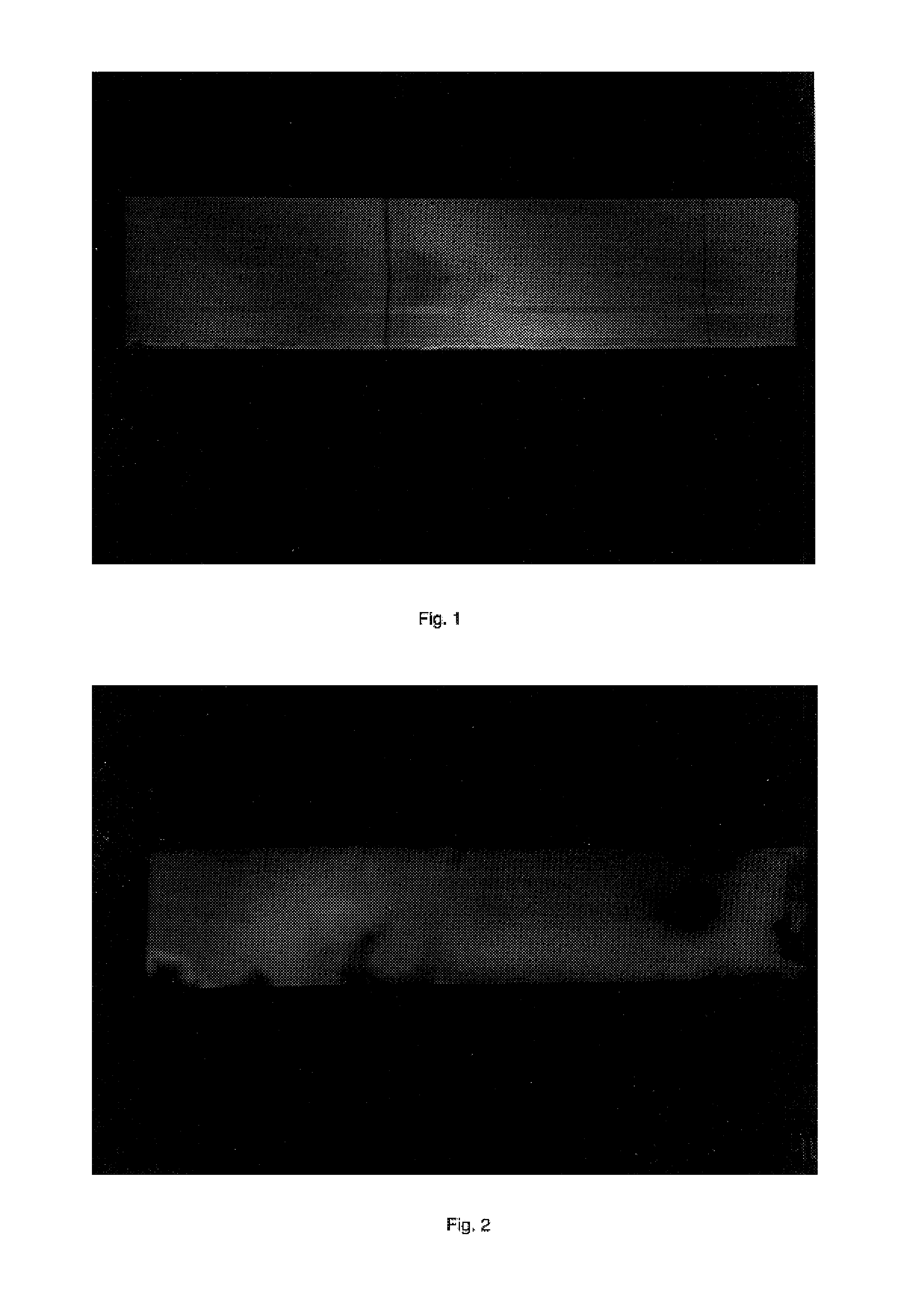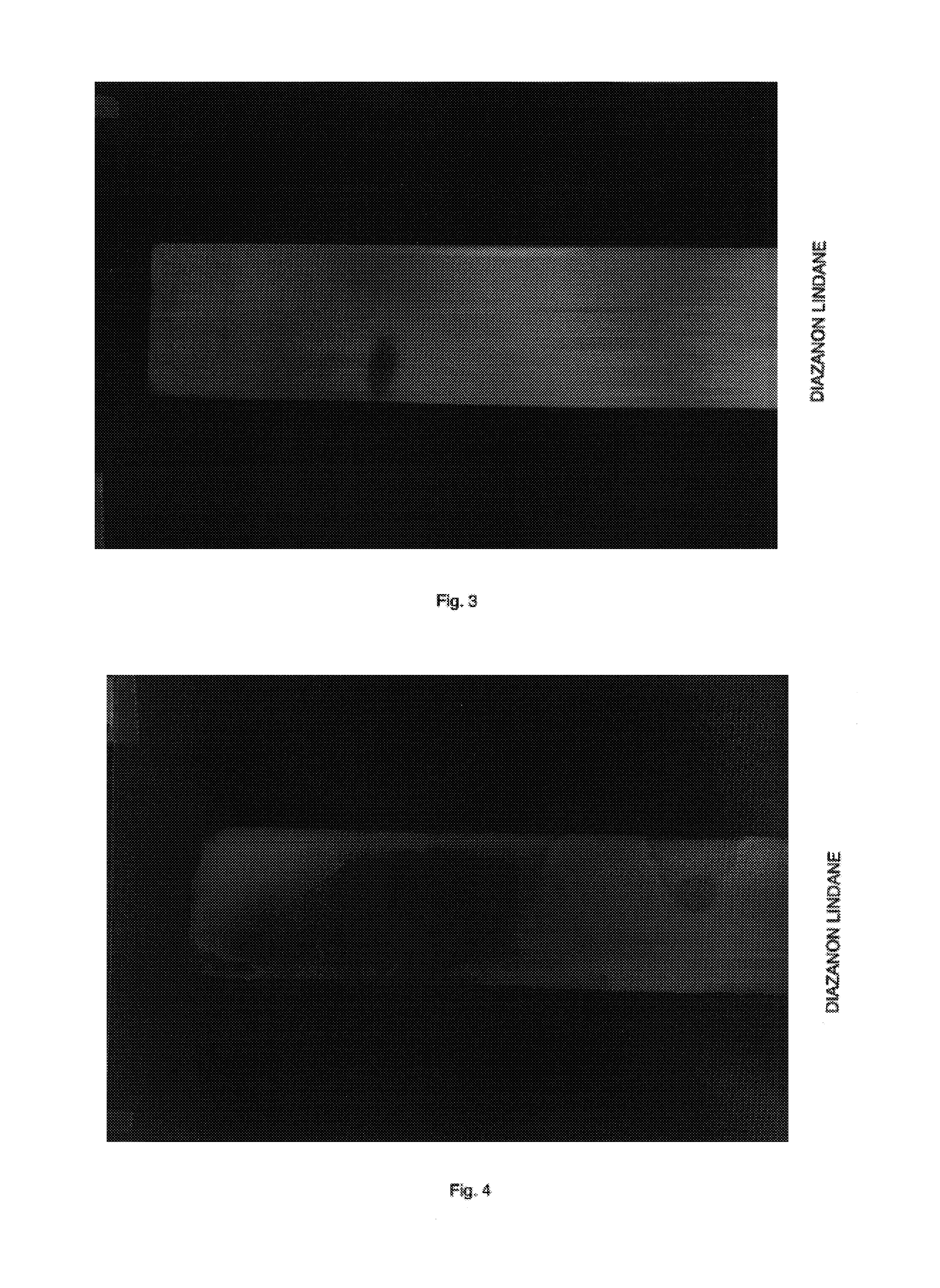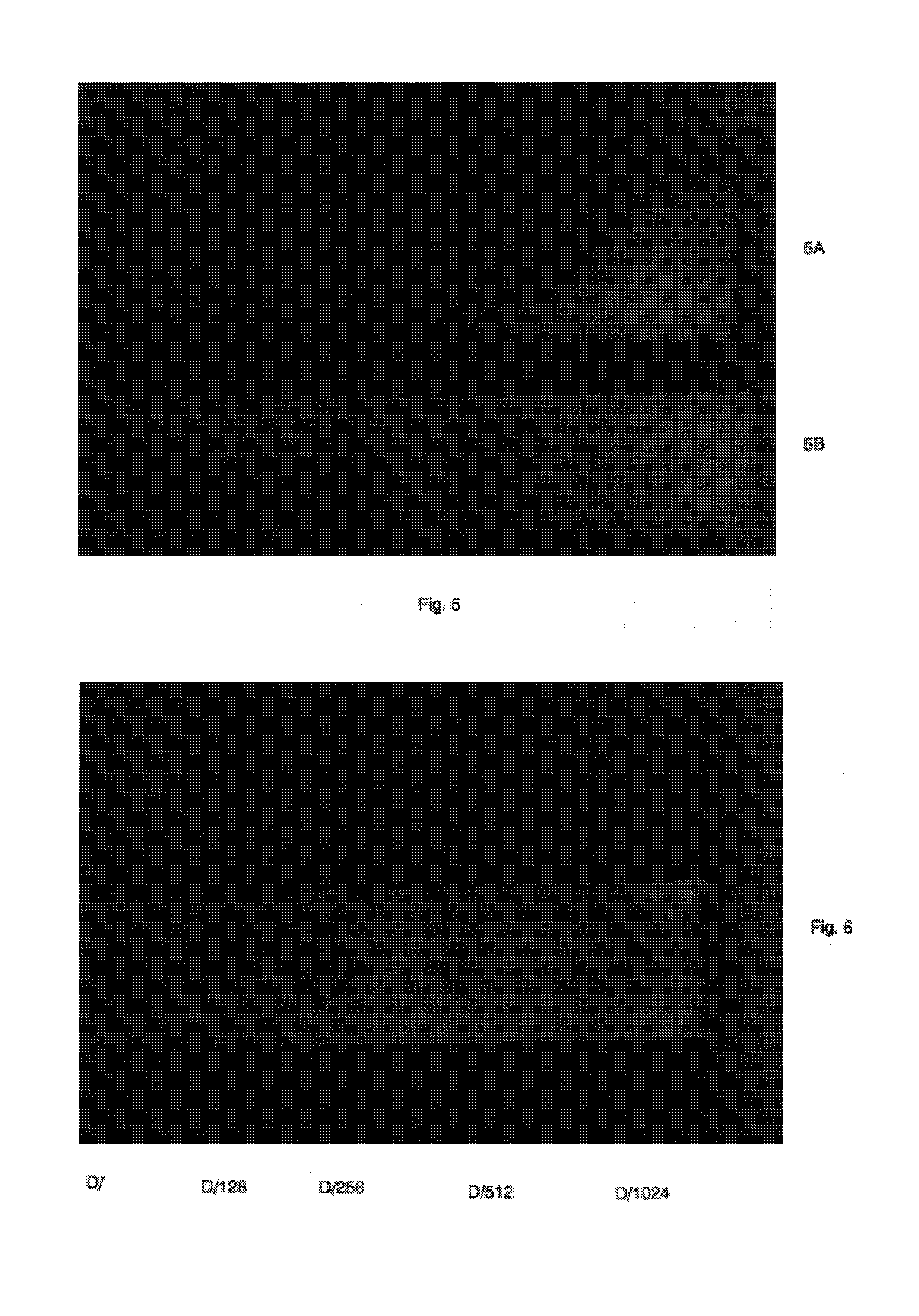Luminous bacteria and methods for the isolation, identification and quantitation of toxicants
a technology of luminous bacteria and toxicants, applied in the field of luminous bacteria and methods for the isolation, identification and quantification of toxicants, can solve the problems of inability to identify, in an isolatable form, and techniques that do not identify the potential toxicity of any visualized substance in the sample, and achieves rapid and accurate methods.
- Summary
- Abstract
- Description
- Claims
- Application Information
AI Technical Summary
Benefits of technology
Problems solved by technology
Method used
Image
Examples
example 1
Isolation of Identifiable Luminescent Inhibitory Toxicant in Garlic Extract Using Luminescent Bacteria
[0092]The present example is presented to describe a method by which components of a substance which inhibit luminescent bacteria may be isolated. The sample analyzed in the present example is a garlic extract. For this experiment, the Inventors first prepared a garlic extract from garlic powder. The garlic powder was processed so as to form a liquid garlic extract. One (1) gram of garlic powder was blended with 5 ml. H2O. Other solvents such as ethanol, chloroform, or acetone may be used to blend the sample, but H2O was found to be the best solvent for the garlic.
[0093]A 5 ml. volume of the garlic extract was first applied (“spotted”) to TLC plates at several points equidistant from one edge of the plate. The plate was inverted in a sealed TLC solvent container with a small amount of solvent in the bottom such that spotted samples were parallel to and above the solvent interface.
[0...
##ic example 2
PROPHETIC EXAMPLE 2
Proposed Chemical Identification of Toxicants in a Garlic Extract
[0114]The present prophetic example is provided to outline one proposed method by which the toxicant(s), as identified according to the method of the procedure outlined in Example 1 may be further characterized to identify the chemical structure of the isolated toxicant(s). This method may also be used where additional amounts of the isolated substance are desired or where the purity of the isolated substance is to be determined.
[0115]The particular “zones of luminescent inhibition” described above, which provide for the isolation of the component substances (i.e., toxicant) in the test sample, are used as reference points to isolate each component substance from an adjacent spotted sample which was run on the same or a separate TLC plate with the same sample. Unsprayed sections of the TLC plate, which correspond to zones of luminescent inhibition on the sprayed portion, may be scraped off and added ...
example 3
Identification of Pesticides in Sample with Luminescent Bacteria
[0119]The present example is provided to demonstrate the use of the claimed methods and reagents for the identification of a pesticide in a sample of known substances. In this example, the pesticides identified were DIAZANON®, LINDANE® and SEVIN®. The luminescent bacteria used in the present example was Vibrio fischeri (ATCC 7744).
[0120]Identification of these individual pesticides and herbicides was achieved essentially according to the same methods described in Example 1. A suspension of Vibrio fischeri in a saline diluent was sprayed, using an aspirator bottle, on the developed chromatograms. Zones of luminescent inhibition appeared surrounding those areas on the plate where the DIAZANON® had migrated. Similar, less dim zones of inhibition, where LINDANE® had migrated (See FIGS. 6 and 7). In a similarly run TLC with SEVIN®, the chromatogram also demonstrated zones of luminescent inhibition at those areas on the chrom...
PUM
| Property | Measurement | Unit |
|---|---|---|
| volume | aaaaa | aaaaa |
| volume | aaaaa | aaaaa |
| diameter | aaaaa | aaaaa |
Abstract
Description
Claims
Application Information
 Login to View More
Login to View More - R&D
- Intellectual Property
- Life Sciences
- Materials
- Tech Scout
- Unparalleled Data Quality
- Higher Quality Content
- 60% Fewer Hallucinations
Browse by: Latest US Patents, China's latest patents, Technical Efficacy Thesaurus, Application Domain, Technology Topic, Popular Technical Reports.
© 2025 PatSnap. All rights reserved.Legal|Privacy policy|Modern Slavery Act Transparency Statement|Sitemap|About US| Contact US: help@patsnap.com



